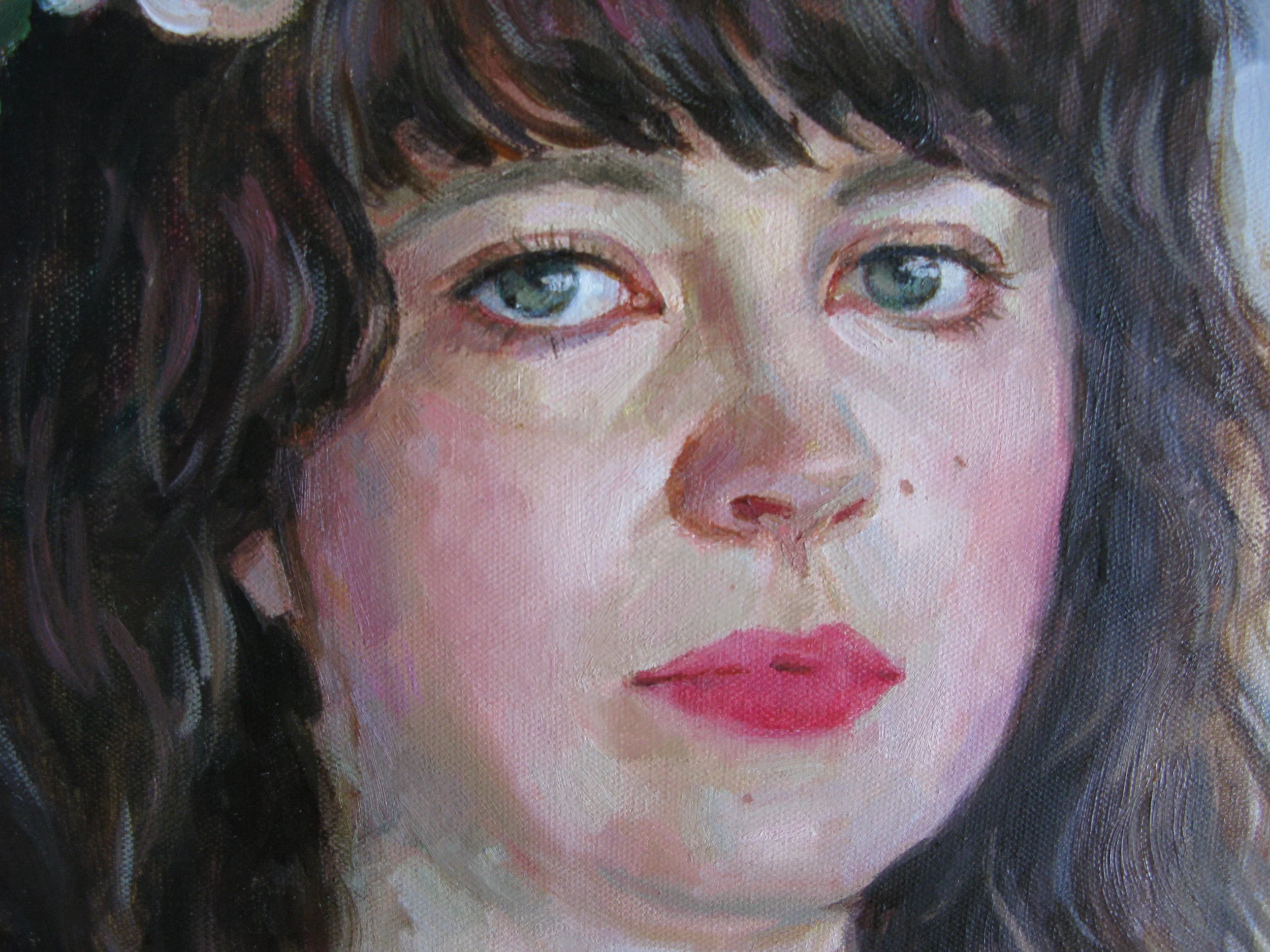Maximum class size 8 people
Easels, boards, chairs and tables provided. Please bring your own drawing and/or painting materials.
Please contact us in case of any questions. See all our Portraiture classes
Course Description:
Drawing & Painting the Human Head
In this exciting, in-depth drawing and painting workshop, students will learn how to draw and paint an accurate likeness of the human face through a structured, step-by-step process. This in-depth and engaging course focuses on both foundational drawing techniques and portrait painting from life. More experienced students may take advantage of a whole day painting in a small (max 8) group with a model throughout, and tutor assistance when required.
You will learn how to:
• Construct the head using simple 3D forms (boxes, cylinders, and spheres)
• Understand the geometry of the skull and its relationship to facial features
• Draw accurate proportions and maintain a consistent viewing angle
• Develop a strong structural foundation to place the features of the face accurately
Class lectures and demonstrations will illustrate the geometric structure of the head, emphasising correct proportions and solid construction. Students will also have the opportunity to paint from a live model.
1. Sketch the Basic Structure
• Begin by composing the head on the canvas in charcoal
• Lightly sketch the head shape and the placement of facial features using basic proportions (e.g., eyes halfway down the head; the nose halfway between the eyes and chin).
• Focus on capturing large shapes and overall structure, not details.
2. Block in Values and Shapes
• Use thinned paint or neutral tones to block in areas of light, midtone, and shadow.
• Work quickly and broadly with a large brush to avoid getting caught up in detail.
• Progress methodically, letting each block of colour inform the next in hue and value.
• Focus on building solid structure before worrying about colour.
3. Establish Skin Tones (Underpainting or Grisaille)
• Choose either a monochrome underpainting (e.g., burnt umber or grey) to map values or begin with transparent layers of colour.
• This stage lays the groundwork for more refined skin tones later.
4. Lay in General Colours
• Start with midtones and gradually build up lights and shadows.
• Use large brushes for broad coverage.
• Blend softly to preserve form and keep the portrait lifelike.
5. Refine Features
• Focus on the eyes, nose, mouth, and ears.
• Carefully compare shapes, angles, and distances.
• Use smaller brushes for precision and vary edge softness to enhance depth.
6. Adjust Values and Colour Temperature
• Reassess lights and shadows for consistency.
• Adjust warmth or coolness in different facial areas (e.g., adding warm reds to cheeks or nose).
• Maintain colour harmony across the portrait.
7. Add Final Details
• Highlight key areas such as the eyes, lips, and hair.
• Add subtle textures and final refinements to features.
• Evaluate the portrait from a distance to check overall balance and likeness.
8. Background and Finishing Touches
• Refine or add a background that complements the portrait.
• Avoid a “cut-out” effect by feathering edges or integrating the hair into the background with loose, expressive strokes.
About Nataliya Zozulya
London-based artist Nataliya began her journey as a figurative painter after graduating from the prestigious National Academy of Fine Art and Architecture in Kyiv, Ukraine. Her tutors were among the leading artists in the socialist realism movement, and their influence on her early work was profound. It took her several years to move away from this stylistic legacy and begin developing her own vision—one that embraces contemporary art, its conceptual underpinnings, and philosophical depth.
Throughout her career, Nataliya has completed numerous projects, each with a distinct theme and artistic focus.
Although she enjoys working across genres, portraiture—alongside landscapes—remains her favourite. “I remember drawing people ever since I was little,” she recalls. “When I was in art school, I made portraits of all my neighbours, my parents' friends, and their children. I still remember spending summers at my grandmother's dacha, where I once ran out of canvas and thinners. My dad gave me plywood boards and car engine oil so I could keep painting. If I didn’t have a model, I would invent a face. I was so fascinated by the endless variety of human features.”
This lifelong fascination with people has shaped Nataliya into a portrait painter of exceptional sensitivity. Her work captures not only the physical likeness of her sitters but also their character and inner essence. She fosters a joyful and collaborative atmosphere during her portrait sessions, in which both artist and sitter are engaged in the creative process.
Her admiration for the great portraitist John Singer Sargent deeply influenced her development. While lecturing in the Fine Arts Department of the National Academy of Fine Arts and Architecture in Kyiv, she conducted research on Sargent at the Hyman Kreitman Reading Room in Tate Britain. Her findings were published in an academic journal.
A gifted and intuitive portrait artist, Nataliya’s deep interest in people continues to define her work. In 2020, she was a featured participant on Sky Portrait Artist of the Year, a testament to her skill and recognition within the field.





